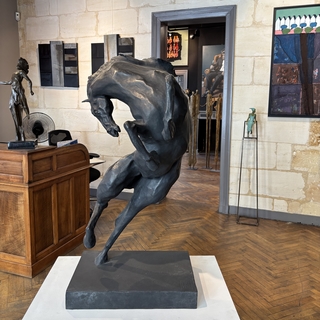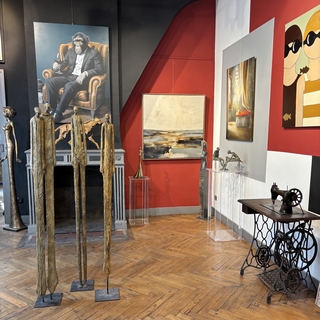No products
Product successfully added to your shopping cart
There are 0 items in your cart. There is 1 item in your cart.

What Role Does Beauty Play in a Work of Art?
The role of “beauty” in a work of art is complex and intriguing. For centuries, beauty has been central to artistic and philosophical discussions, inspiring artists and captivating audiences. However, while beauty is often associated with art, it is not a requirement for a creation to be considered a work of art. So, what is the true role of beauty in art? Let’s explore this question with some striking examples.
Classical Beauty: The Pursuit of Harmony and Aesthetics
For a long time, beauty in art was linked to harmony, proportion, and aesthetics. Ancient Greek sculptures or Renaissance frescoes illustrate this pursuit of classical beauty, where every line and curve aimed to evoke perfection. Michelangelo’s sculpture David, for example, embodies this ideal beauty: a perfect balance of proportion, strength, and grace. Many pieces displayed at Bouillon d'Art Gallery draw inspiration from this aesthetic pursuit, where classical beauty and technical skill come together to captivate viewers.
Beauty and the Grotesque: An Aesthetic of Contrast
As art evolved, the concept of beauty was redefined. In the 19th century, artists like Gustave Courbet challenged conventions by painting realistic scenes without idealization. For instance, The Origin of the World shifts away from academic beauty to focus on the raw truth of the human body. In this context, beauty is no longer solely in harmony but in the artwork’s power to provoke.
Contemporary artists push this further by creating pieces that blend beauty and the grotesque, illustrating that beauty can emerge from brutality or provocation. Some contemporary artists exhibited at Bouillon d'Art Gallery revisit this duality with striking contrasts, prompting visitors to question their understanding of artistic beauty.
Beauty in Abstraction: Emotions at the Core of Art
The arrival of abstract art in the 20th century transformed the notion of beauty entirely. Artists like Wassily Kandinsky sought to convey pure emotion through abstract shapes and colors. Here, beauty is no longer about faithfully representing reality but rather about emotional impact. An abstract artwork, like those presented at Bouillon d'Art Gallery, finds its beauty in the emotions it evokes, without necessarily representing something tangible.
Subjective Beauty: Each Viewer as an Interpreter
Finally, it is essential to recognize that beauty in art is subjective. What one viewer finds beautiful may not resonate with another. Contemporary art, in particular, values this diversity of perceptions, encouraging audiences to interpret a work based on their own experiences and emotions. At Bouillon d'Art Gallery, every piece invites personal reflection on beauty, allowing visitors the freedom to discover what resonates deeply with them.
In conclusion, beauty in art is varied and ever-evolving. Whether classical, contrasting, abstract, or subjective, beauty holds a central place in art, serving as a bridge between artist and viewer. At Bouillon d'Art Gallery, the variety of works exemplifies this richness, inviting each visitor to reassess their perception of beauty in art.



